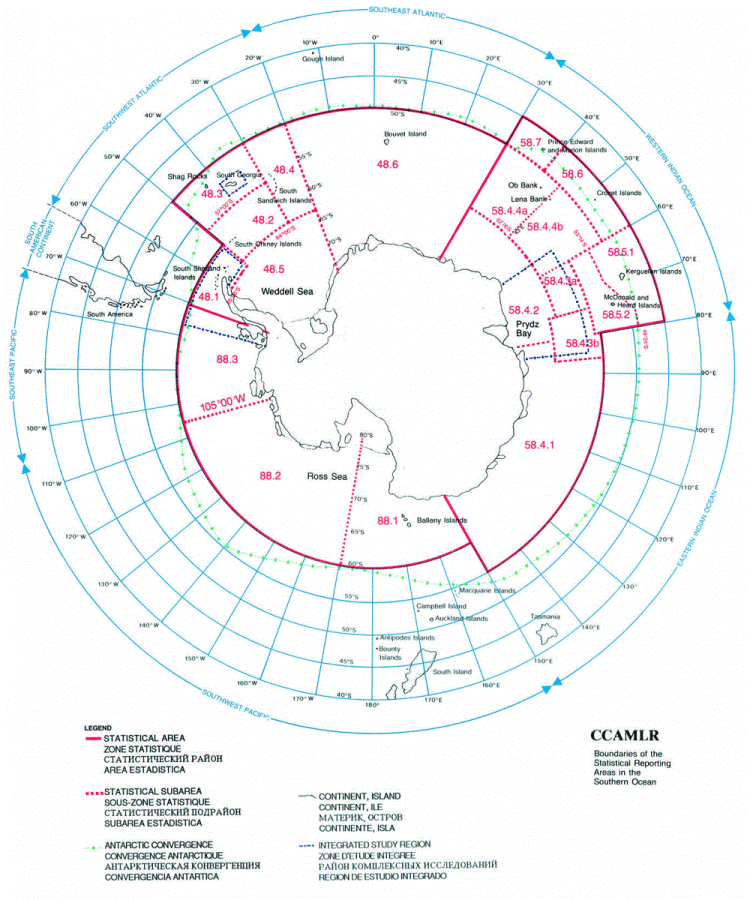On this page
The Antarctic Treaty
New Zealand is one of the original parties to the 1959 Antarctic Treaty, which covers the area below 60° south latitude. Its primary aim is to ensure that Antarctica is used exclusively for science and other peaceful purposes, and doesn’t become the focus of international conflict.
The Treaty has been successful in promoting international cooperation in Antarctica while enabling parties to preserve their positions on questions of territorial sovereignty.
The 12 original parties to the Antarctic Treaty and other parties conducting substantial research activity in Antarctica are known as the “consultative parties” to the Treaty.
Each year, the consultative parties attend an Antarctic Treaty Consultative Meeting (ATCM) where they:
- exchange information
- consult on Antarctic matters of common interest
- agree on measures to support the Treaty’s principles and objectives.
Find out more about the Treaty and how it works (external link)
The Protocol on Environmental Protection to the Antarctic Treaty
This 1991 Protocol designates Antarctica as a ‘natural reserve, devoted to peace and science’. It sets out environmental principles regulating human activities in Antarctica, and prohibits mining activity unless for scientific research. More detailed rules on matters such as the protection of plants and animals and the management of waste are set out in Annexes to the Protocol.
The Protocol and its Annexes are implemented in New Zealand through the Antarctica (Environmental Protection) Act 1994.
The Protocol establishes a Committee for Environmental Protection (CEP) to advise the ATCM on the implementation and the efficacy of the Protocol. The CEP is made up of representatives of the parties to the Protocol, and meets alongside the ATCM each year.
The Protocol, like the Antarctic Treaty, has no end date and can only be amended by unanimous agreement of the consultative parties. After 2048, any consultative party may request a conference to review the Protocol. The conference may adopt amendments to the Protocol, but only in accordance with a special procedure that requires the agreement of 75% of the consultative parties as at 1991. There are additional safeguards relating to the amendment of Article 7 of the Protocol, which prohibits Antarctic mineral resource activities.
Read more about the Protocol and what it covers(external link)
Commission for the Conservation of Antarctic Marine Living Resources (CCAMLR)
New Zealand is a founding member of CCAMLR which was established in 1982 to conserve Antarctic marine life. This was in response to increasing commercial interest in the Antarctic’s krill resources and the over-exploitation of other marine resources in the Southern Ocean. CCAMLR's rules allow for sustainable fishing, taking into account the impact on other parts of the ecosystem.

New Zealand has a particular interest in the exploratory toothfish fisheries in the Ross Sea, and participates actively in the monitoring of the licensed fishing fleet, as well as combating illegal, unreported and unregulated fishing in the CCAMLR area.
As a CCAMLR Member, New Zealand has a responsibility to carry out surveillance against illegal, unreported and unregulated (IUU) fishing in the CCAMLR area, and to monitor licensed vessels’ compliance with CCAMLR Conservation Measures.
IUU fishing is broadly defined as fishing activities carried out in contravention of CCAMLR’s conservation and management rules. It is a serious problem in the Southern Ocean. It damages fish stocks and the marine ecosystem and contributes to the death of many marine mammals and seabirds through destructive fishing techniques and the absence of by-catch mitigation measures.
In support of the CCAMLR System of Inspection, New Zealand designates inspectors and carries out regular maritime patrols in the Southern Ocean, in particular in the Ross Sea.
CCAMLR meets in Hobart, Australia each year.

